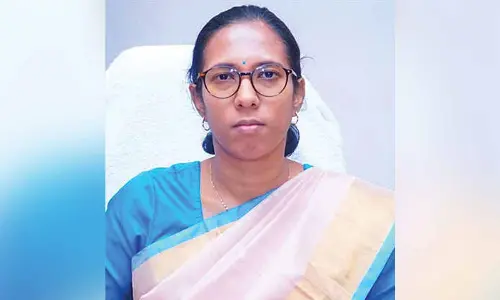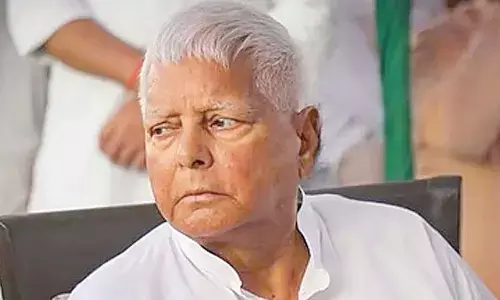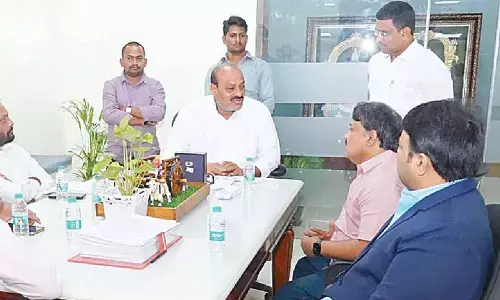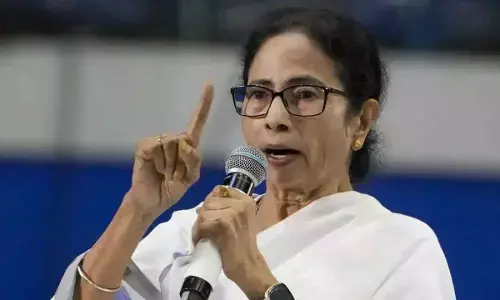Record of Sorts in Medical Education: From lone Osmania to govt med college in every district
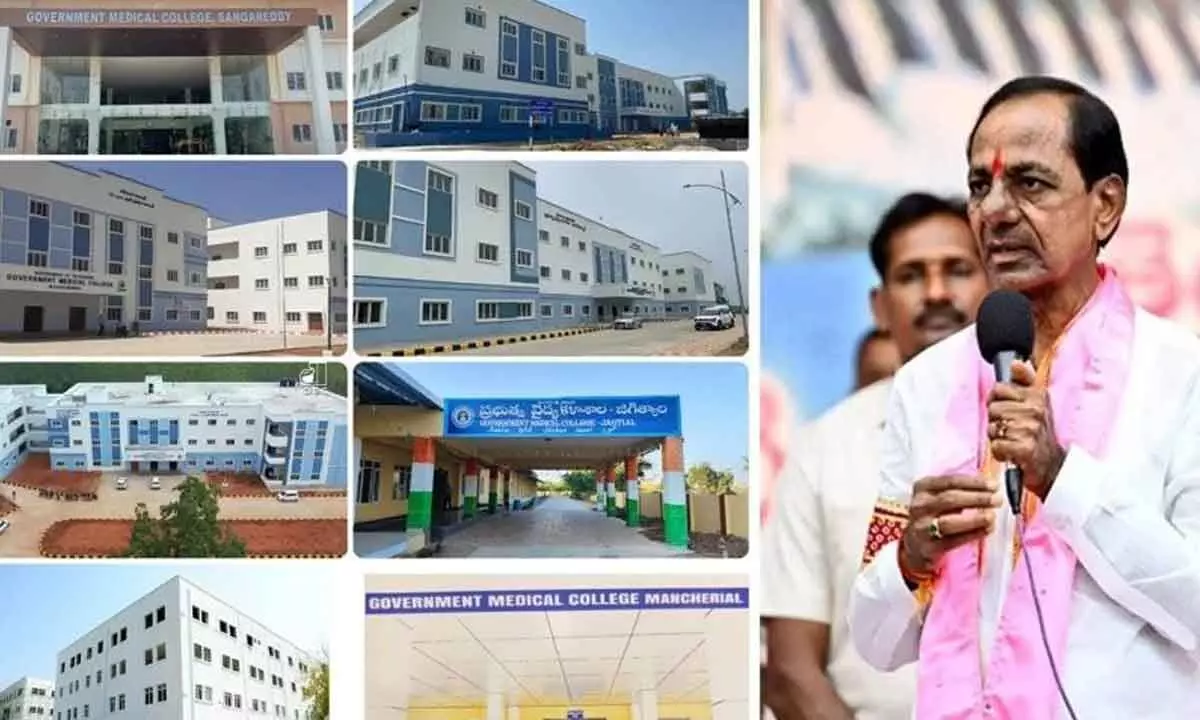
Telangana State, the newest in the country, is marching ahead in creating a record of sorts in medical education, when every district will be provided with a government medical college, including in remote and tribal areas.
Telangana State, the newest in the country, is marching ahead in creating a record of sorts in medical education, when every district will be provided with a government medical college, including in remote and tribal areas.
An exceptional chapter in the contemporary history of medical education in Telangana State, was unveiled virtually through video conference, at Pragati Bhavan, the Chief Minister's Camp Office in Hyderabad, on November 15, 2022. Chief Minister K Chandrashekhar Rao formally launched the commencement of classes for MBBS first year students in eight new medical colleges in the state, heralding a qualitative change in medical education. With this initiative of CM KCR, medical studies will get a tremendous boost in Telangana. In future, no student needs to migrate either for MBBS or in due course for specialty, super-specialty and multi-specialty studies in medicine to other states.
Prior to this, after formation of state, four government medical colleges in Mahbubnagar, Siddipet, Nalgonda and Suryapet were opened. With the addition of eight more government medical colleges in Sangareddy, Mahaboobabad, Manchiryala, Jagtial, Wanaparthy, Kothagudem, Nagar Kurnool and Ramagundam, the number of government medical colleges after the formation of state touched 12 and the total colleges to 17. Tribal concentrated Mahaboobabad and remote area Wanaparthy, too, got colleges, which is a unique feature.
As part of the policy of setting up one medical college in every district, as of now 16 districts have been covered, including the erstwhile Hyderabad, Warangal, Nizamabad and Adilabad, and 17 more districts are yet to be covered. There were only five government medical colleges prior to the formation of state. From there Telangana travelled to 17 government medical colleges within a span of 8 years. A phenomenal achievement and a record of sorts indeed! While launching, CM KCR said government nursing colleges would be set up in all 33 districts, along with the medical colleges to produce a large number of paramedial staff.
Opening of new medical colleges means improving the standards of healthcare facilities, better patient care services, availability of an adequate number of MBBS as well as specialty and super and multi-specialty doctors. This enabled four times increase in the MBBS seats in government colleges from 850 to 2,790, PG seats from 531 to 1,180 and multi-specialty seats from 70 to 152.Thus, ample opportunities are available for merit students and also for Dalit, tribal, weaker sections, BC and minority students. In the true spirit of 'Telangana practises and the country follows it in all spheres,' here is yet another Telangana model.
The history of medical education in this part of the country, dates back to 180 years. Osmania Medical College in Hyderabad, formerly known as 'The Hyderabad Medical School,' was founded in 1846 by the Fifth Nizam, Afzal-ud-Dowla, Asaf Jah 5, and is one of the oldest medical schools in the country. The medical school was renamed as Osmania Medical College, after the Seventh Nizam of Hyderabad, Mir Osman Ali Khan. It is affiliated to Osmania General Hospital (OGH), one of the oldest hospitals in India. Sources divulge that when the Nizam became ill, probably from diabetes, the then British Resident suggested that he be treated with Western medicine by a surgeon, Dr William Campbell Maclean. The Nizam recovered fully. Impressed with allopathic medicine, he proceeded with establishment of the Hyderabad Medical School headed by Dr Maclean. It appears that the world's first female anesthesiologist Dr Rupa Bai Furdoonji graduated from here in 1889.
The second one that started in Telangana is Gandhi Medical College (GMC), originally named as People's Medical College. GMC founded in 1954 was officially inaugurated on June 25, 1955 by the first President of India, Dr Rajendra Prasad. In 1956, the college was taken over by the government. The college which was originally located near the present-day SD Eye Hospital moved to Basheer Bagh and later to its present premises in Musheerabad. Dr Syed Nizamuddin Ahmed, the founder of the college, was its first principal.The college is affiliated to Gandhi Hospital which was originally established about 150 years ago in 1851 to be developed into a Cantonment Hospital in 1900 and later grew to King Edward Memorial Hospital in 1913.
The third one is Kakatiya Medical College which was founded and inaugurated on 23 July 1959 by the Warangal Regional Medical Education Society supported by the then CM of united AP Neelam Sanjiva Reddy. It was originally in a building donated by the Pingale family at Waddepally and it moved into a makeshift building constructed at the permanent site in November 1961. The then AP government took over the college in February 1977.
While these three were the only government medical colleges in Telangana prior to formation of united Andhra Pradesh, two more medical colleges namely, Government Medical College, Nizamabad (started in 2013) and Rajiv Gandhi Institute of Medical Sciences, Adilabad (started in 2008) were opened prior to formation of Telangana.
Dr S Murthy Chennapragada, a graduate and postgraduate from Osmania Medical College 25 years ago and now working as a Senior Lecturer and Senior Pediatric and Interventional Radiologist in Sydney (Australia), was on a visit to Hyderabad when CM KCR launched eight new medical colleges. He was thrilled to see the development initiated in Telangana in medical education after its formation. He expressed the view that the plan to establish a new medical college for every district, covering rural, remote and tribal areas in the state, has a huge potential to transform the practice of medicine, in particular that of 'Rural medicine.' Dr Murthy, however, favored a couple of additions for added benefit. To quote him: "Many of these fresher medical colleges may be promoted into dedicated colleges for rural medicine augmenting primary healthcare provision to remote and vulnerable communities. Medical students in these colleges may be taught concepts and principles of medicine relevant and applicable to unique healthcare needs in remote and rural areas unlike urban health care needs."
"Since establishment of a medical college presumes facility of an equally well-equipped teaching hospital for training medical students, which is challenging, setting-up of multi-specialty government hospitals in every district with adequate infrastructure (apart from the already existing hospitals) and also qualified teaching staff commensurate with the needs of a teaching hospital needs to be given a thought. Hence, it would be better to affiliate larger tertiary care hospitals that are already in existence and have well proven capacity for teaching such as Osmania, Gandhi, MGM with multiple medical colleges so that the students can undergo in rotations in certain departments in addition to their own local teaching hospitals."
"There has been tremendous increase in tertiary healthcare access now. However, essential need still remains in Primary Health Care. The future doctors coming out of these new medical colleges may be suitably oriented to provide primary care. Towards this, these new medical colleges may have to design the curriculum to cater to regional, rural, tribal medicare with emphasis on providing global healthcare standards locally. This path-breaking initiative would be a model for the entire country to replicate and thereby to improve primary healthcare standards."
In essence, increase in number of medical colleges will go a long way as it would strengthen medical education and to revitalise the government system of primary, secondary and tertiary health care. However, as the majority of people's medical requirements are basically primary, while continuing to expand all kinds of general and spatialityhospitals,including Basti Davakhanas as well as village Davakhanas and to reduce rush on hospitals like Osmania, Gandhi, Fever etc., it ishighly desirable to create a large number of round-the-clock dispensaries or clinics. A General Physician or an MBBS doctor assisted by a para-medicin shifts may be posted there to provide Primary Health Care to an identified number of people in a specified area and thus bringing back the 'Family Doctor' concept with a personal touch.








